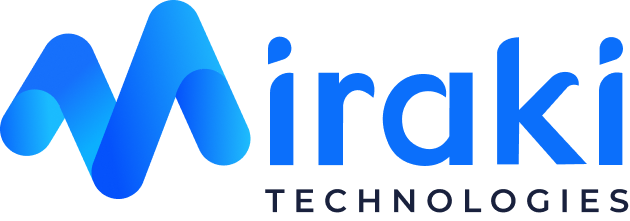Home / Blogs / Enterprise Observability
How Observability Enhances DevOps Collaboration and Productivity
Ready for a Cloud Revolution? Let Our Experts Design a Fail-Proof Strategy for Your Success!
Your DevOps pipeline is only as strong as the insights driving it. Without real-time visibility into system health, dependencies, and performance bottlenecks, teams are stuck reacting to problems instead of preventing them. Slow incident resolution, misaligned workflows, and operational silos become inevitable roadblocks.
This is where enterprise observability reshapes the game. It transforms DevOps collaboration from a reactive firefight into a proactive, data-driven strategy. By breaking down visibility barriers, observability empowers engineering teams to troubleshoot faster, optimize deployments, and deliver resilient software at scale.
In this blog, we’ll understand how observability fuels collaborative development in DevOps. If your enterprise is serious about accelerating DevOps productivity, observability is your competitive edge. Let’s dive in.
This is where enterprise observability reshapes the game. It transforms DevOps collaboration from a reactive firefight into a proactive, data-driven strategy. By breaking down visibility barriers, observability empowers engineering teams to troubleshoot faster, optimize deployments, and deliver resilient software at scale.
In this blog, we’ll understand how observability fuels collaborative development in DevOps. If your enterprise is serious about accelerating DevOps productivity, observability is your competitive edge. Let’s dive in.
What is Enterprise Observability in DevOps?
Enterprise observability is the ability to monitor, analyze, and optimize IT environments in real time. Unlike traditional monitoring, which only detects known issues, observability helps DevOps teams proactively identify and resolve unknown issues by providing insights into logs, metrics, and traces.
Observability enables development and operations teams to:
- Gain a 360-degree view of applications, infrastructure, and dependencies.
- Detect and diagnose issues before they impact end users.
- Improve communication between development, operations, and security teams.
- Reduce downtime and accelerate incident resolution.
With real-time insights, teams can work collaboratively to build, test, and deploy software more efficiently, ensuring continuous delivery and high availability.
Five Major Ways Enterprise Observability Strengthens DevOps Collaboration
1. Breaking Down Silos Between Dev and Ops
Traditionally, developers focus on coding, while operations handle deployment and system performance. Enterprise observability bridges this gap by offering real-time visibility into application behavior and infrastructure health. With access to shared data, teams can troubleshoot issues together, fostering a culture of collaboration rather than blame.
2. Enhancing Communication with DevOps Collaboration Tools
Modern DevOps collaboration tools like Azure DevOps collaboration, Slack, and Jira integrate with observability platforms such as Splunk Observability and Datadog Observability enabling teams to receive instant alerts, collaborate on issue resolution, and track performance metrics in real time. This ensures that teams are always on the same page, reducing friction and improving efficiency.
3. Accelerating Root Cause Analysis
Observability eliminates guesswork by providing context-rich telemetry data. When an issue arises, teams can quickly trace its origin across logs, metrics, and distributed traces, ensuring faster mean time to resolution (MTTR). This speeds up the feedback loop in collaborative development in DevOps, allowing teams to iterate and improve continuously.
4. Proactive Problem Detection and Prevention
With observability tools in place, DevOps teams can detect anomalies and potential failures before they escalate. AI-powered insights and predictive analytics help teams take proactive measures, reducing downtime and maintaining system reliability.
5. Enabling Continuous Improvement with Data-Driven Insights
Observability provides valuable performance data that teams can analyze to optimize code, enhance system resilience, and improve overall software delivery. This data-driven approach strengthens DevOps collaboration by enabling teams to make informed decisions that drive innovation and efficiency.
How to Effectively Integrate Observability Across the DevOps Pipeline
Embed observability into every stage of software development, from coding to deployment, ensuring end-to-end visibility. Implementing observability in DevOps requires a strategic approach. Here are some steps to get started:
Define Key Metrics
Identify the most critical metrics that reflect system health, such as latency, error rates, and request rates. These metrics will provide a clear picture of the system’s performance and help teams focus on the most important areas. Establishing key performance indicators (KPIs) ensures that teams can measure and track the effectiveness of their observability efforts.
Set Up Logging and Tracing
Implement comprehensive logging and distributed tracing to capture detailed information about system operations. This will enable teams to track down issues and understand how different components interact. Effective logging and tracing practices are essential for diagnosing complex issues and ensuring system reliability.
Use Observability Tools
Leverage advanced observability tools like Splunk, Datadog, Dynatrace, New Relic etc. to collect, visualize, and analyze observability data. These tools provide powerful capabilities for monitoring and troubleshooting.
Integrate with CI/CD Pipelines
Ensure that observability is integrated into your continuous integration and continuous deployment (CI/CD) pipelines for real-time monitoring. This allows teams to detect and address issues early in the development cycle. By incorporating observability into CI/CD processes, teams can maintain high standards of quality and reliability throughout the software development lifecycle.
Develop a Culture of Shared Responsibility
Encourage collaborative development in DevOps, where both developers and operations teams take ownership of application performance.
Automate Incident Response
Implement automated alerting and remediation strategies to minimize downtime and improve response times.
Continuously Monitor and Improve
Regularly review observability insights to identify patterns, optimize workflows, and refine DevOps processes.
Conclusion
As your business gears up for digital transformation, observability is no longer optional—it’s must-have to achieve DevOps collaboration and maximize productivity. By providing real-time visibility, enhancing communication, and enabling proactive issue resolution, observability empowers teams to build, deploy, and maintain reliable software at scale.
If your organization is looking to improve DevOps collaboration tools and drive efficiency, investing in an observability platform is the key to success.
If your organization is looking to improve DevOps collaboration tools and drive efficiency, investing in an observability platform is the key to success.





 +91-9154904675
+91-9154904675